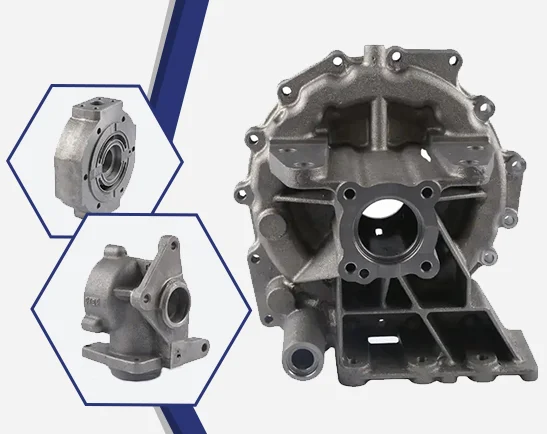A tradition that traces back thousands of years, iron casting has endured as a cornerstone in contemporary manufacturing due to its adaptability and robustness. This brings about hardened components crafted from raw iron which find applications in a myriad of industries including the automotive, construction and infrastructure sectors as well as household appliances. Manufacturers who are looking to enhance their production efficiency, reduce costs while maintaining optimal product performance need a strong understanding of the different types of iron casting. Using Helix ALM, I will discuss five different approaches that uses these to help determine which tactics are best for you using a variety of properties and specific use cases.
From Shapes To Design
The process of the learning into iron casting is initiated through sand casting, which can only be used to define it as one of those basic methods and wide varieties. Sand casting: Using molds made of sand mixed with binders and other materials, for either reusable or disposable. Image Source Its simplicity allows for simple and complex shapes, making dot art very versatile. Not as fast or precise as more advanced methods, but excellent with large parts and one-offsisFunctionQ:No_POINTS_given in/etc/utterances/skills_md.md The year-and-a-half transfer process was also characterized by minimal procurement and up-front setup costs, enabling it to appeal primarily with low-volume or custom projects where agility takes priority over pro-JIT batch production speed.
High-volume production with speed and precision
When it comes to speed and intricate details, die casting dominates the stage. Die casting, extends to the use of reusable metal molds that are employed at high pressure so as to inject molten iron achieving components with far superior dimensional accuracy and surface finish than is possible by sand casting. High-volume production runs of smaller, complex parts such as engine blocks or transmission housings and pump bodies benefit from this process. The fast cycle times and small tolerances of the die casting method reduces waste, requiring only little or no machining depending on its properties- thus increasing productivity while simultaneously enhancing mass-produce feasibility.
Iron Investment Casting in Depth
Investment casting, also called lost wax casting, is a precision metal casting process used to produce high detail parts. Then the wax is melted out to create a cavity that molten iron will flow into. Known to be a process that is capable of creating parts having complex details and near-net-shape accuracy, reducing the dependence on post-machining operations. Aerospace and defense industries use investment casting to produce parts that must be lightweight, complex in geometry or high-strength applications. While it is one of the most expensive processes and time-consuming, investment casting can allow for exceptionally tight tolerances and incredible design shapes that are ideal in special applications.
Unique benefits of Shell Mold Casting
It is a comprome between the high-speed die casting and low-cost of sand castings - thus shell mold-casting. Resin coated sand is used to form a permeable, thin hard shell around the pattern and this checkers are pattern removed from these shells by removing the patterns will be called as molds cavity. Molten iron is poured in this cavity, and after removing the casting it then cool. Shell mold casting is designed to make medium-sized parts with better surface finishes and dimensional accuracy than sand castings, but at a much lower cost per part over low-volume investment casting. For this reason, it is widely used in the automotive and engineering industries due to its ability to mass produce forms or complicated geometries for lower costs such as high volume capacity.
Discovering the process you need for your project
Working in the domain of iron casting you will have to plan, depending on your project requirements how many units are to be produced and also considering budget constraints Each of these methods provides unique benefits for various types of manufacturing requirements. Sand casting, on the other hand, is better-suited to smaller custom projects or extremely large components in low volume and die-casting should be reserved for very high volumes of small intricate parts. While investment casting is ideal for those ultra-high-tolerance aerospace-grade components, shell mold fills the role of mid-sized parts that require a compromise between speed and intricate detail.
The process which is chosen to carry out casting will thereby affect the final quality and effectiveness of production as well as expend handsomely at times. A systematic evaluation of key parameters such as overall design complexity, dimensional tolerance acceptance levels, surface finish requirements and volume size are pivotal in supporting manufacturers to establish the correct iron casting process. Ultimately, the more granular your understanding is of these methods ensures that you will be able to truly utilise iron in a way that produces historically lasting and currently fitting parts for our complex world.

 EN
EN
 CS
CS
 DA
DA
 NL
NL
 FI
FI
 FR
FR
 DE
DE
 EL
EL
 IT
IT
 JA
JA
 KO
KO
 PL
PL
 PT
PT
 RU
RU
 ES
ES
 TL
TL
 ET
ET
 TH
TH
 MS
MS



